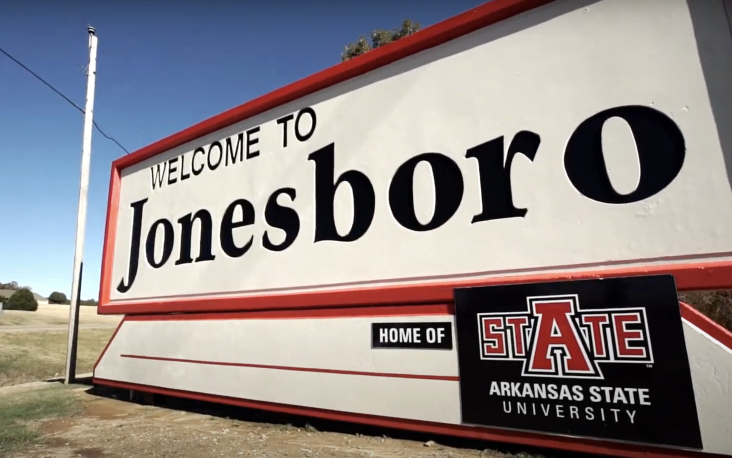Gary Harpole reflects on three decades of Jonesboro growth
by July 12, 2023 8:30 pm 798 views

When Gary Harpole was first elected to the Jonesboro City Council in 1992, there were many unique problems facing the city but none bigger than chronic traffic problems, he told Talk Business & Politics. He was only 26 at the time and he was part of a new wave of elected officials that planned to fix the problem and bring the then-bifurcated city together.
Residents passed a sales tax hike that generated $44 million. The money was used to fix the city’s traffic issues, he said.
It’s been 30 years since his first foray into development, but Harpole who now serves as the Managing Partner and Director of Development for Halsey Thrasher Harpole Real Estate Group, said he thinks Jonesboro is uniquely positioned for growth into the long-term future.
“Since 1990 we’ve had good, steady growth,” he said. “It averages about 2% per year. We don’t have the peaks that some other places have, but we don’t have the valleys, either.”
Jonesboro is one of the most unique cities not only in Arkansas but the South, Harpole said. It has a population of about 81,000 which ranks it fifth among all cities in Arkansas and it ranks as the 455th largest city in the country. It ranks fourth in terms of income in the state.

Northeast Arkansas’ hub city, however, ranks second in terms of geographic size. With more than 81-square-miles in its city limits, the city is larger than Conway and Springdale combined. Nationally, it ranks as the 144th largest city in terms of physical size.
Supporting a community that is sprawled across such a large space is a unique and difficult challenge for city leaders and private developers, Harpole said.
Fire and police coverage, streets, water and sewer infrastructure, sidewalks and other services must be spread across vast distances. To cover this space costs a lot of money, he said. The city has more than 300 miles of open drainage ditches that have to be maintained, he added.
Creating better quality of life metrics for residents will be a key to future growth, Harpole said.
Real estate developer Carroll Caldwell has been working on a mixed-use development on U.S. 49 South not far from the Valley View School District. Harpole and his company, Halsey Thrasher Harpole Real Estate Group, have been developing another mixed-use development, Greensborough Village in the northern section of town just past the Arkansas State University campus.
Developments like these will be critical in attracting companies and talented workers in the coming years, he said. The city’s tax base is solid, and its utilities are among the most inexpensive in the country. But creating viable living and playing spaces will be critical to future development.
“It’s a little bit of a chess game … it’s getting harder and harder to keep our younger people here,” he said.
Short-term issues also persist. Interest rates have been rising for the better part of a year and a half, and Harpole thinks another quarter percent raise will come before the end of the year. He noted the rates still rank in the middle of the average interest rates for loans when compared to the last half century.
Higher interest rates haven’t impacted commercial projects as much in NEA, but there have been some impacts to the residential market. Coupled with higher material and labor costs, supply chain and other issues, the housing market has dipped, he said. Harpole said he thinks most of the problem is uncertainty in the market, but he expects interest rates to decline in 2024 and there will be a robust return in the residential real estate market.
One key to keeping the residential market viable while interest rates surged has been the local banking community, Harpole said.
“I think the local banks and bankers have done a great job of being aggressive and keeping money in our community,” he said. “People keep moving here and we will need more housing.”
